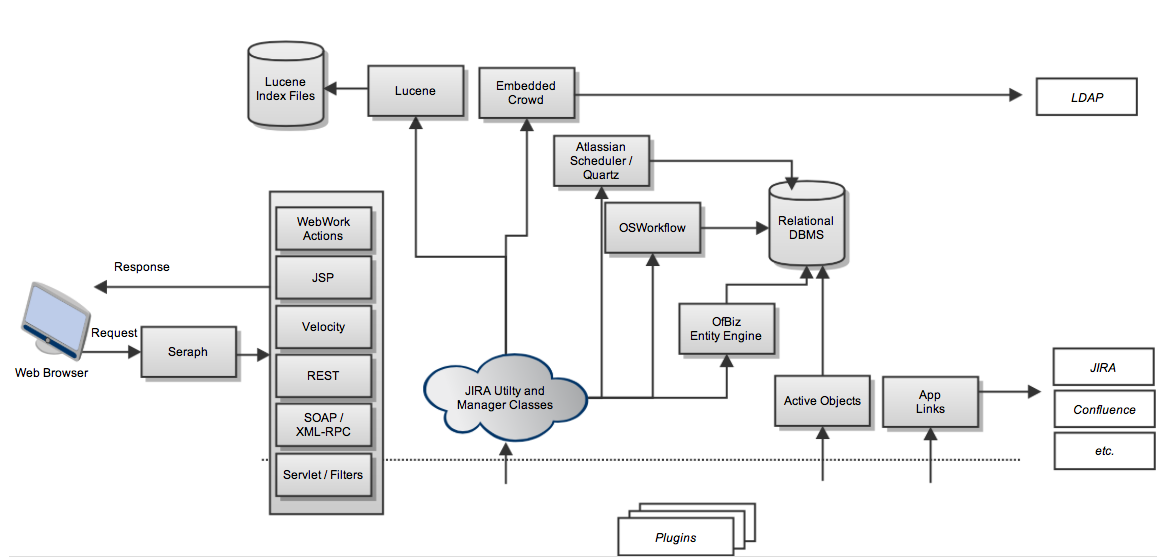On this page:
目录
JIRA Overview
This page provides a very high level overview of JIRA's dependencies and the role each one plays in JIRA. This page makes references to external resources (websites, books) where one can find more information.
Technical Introduction to JIRA
JIRA is a web application written in Java. It is deployed as a standard Java WAR file into a java Servlet Container such asTomcat.
WebWork
As JIRA is a web application, users interact with JIRA using a web browser. JIRA uses OpenSymphony's WebWork 1 to process web requests submitted by users. Please note that WebWork 1, not 2, is used. WebWork 1 is a MVC framework similar to Struts. Each request is handled by a WebWork action which usually uses other objects, such as utility and Manager classes to accomplish a task.
...
For more information on WebWork 1 please see its online documentation.
Seraph
Almost all authentication in JIRA is performed through Seraph, Atlasian's open source web authentication framework. The goal of seraph is to provide a simple, extensible authentication system that we can use on any application server.
...
For more information on how seraph works internally please see this page.
Embedded Crowd
Crowd is Atlassian's Identity Management and Single Sign On (SSO) tool.
Both JIRA and Confluence now embed a subset of Crowd's core modules for powerful and consistent user management.
...
In addition, Embedded Crowd also has its own concept of "User Attributes".
The two concepts, although related, do provide different advantages and disadvantages, so plugin developers should consider their individual requirements in order to choose the more suitable way.
User properties in PropertySets.
- PropertySet values are typed.
There are 11 different types allowed including numbers, dates, arrays of bytes, parsed XML DOM's, nested Properties, and arbitrary serialized Objects. - These can be arbitrarily large, as they can be stored as CLOBs or BLOBs in the database.
These large amounts of data are not suitable for searching against. - PropertySets only allow a single value to be stored against a given key.
Crowd Embedded user attributes.
- Crowd Attributes store only text data.
- In order to facilitate searchability, Crowd limits the values to 255 characters or less.
(Note that MySQL has a limitation that means you can't index columns with > 255 characters ) - Crowd allows multiple values to be stored against a single key.
These values must all be unique with a case-insensitive test.
(This follows the standard LDAP behaviour).
PropertySet
OpenSymphony's PropertySet is a framework that can store a set of properties (key/value pairs) against a particular "entity" with a unique id. An "entity" can be anything one wishes. For example, JIRA's UserPropertyManager uses PropertySet to store user's preferences. Therefore, in this case, the "entity" is a User.
...
For more information on PropertySet please see its documentation. Also see JIRA Database Schema.
JIRA Utility and Manager Classes
A lot of business logic in JIRA is implemented in 100s of java classes. The classes can be simple utility classes or Manager Objects.
...
